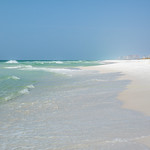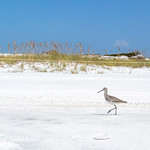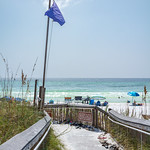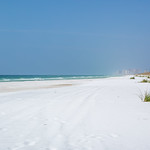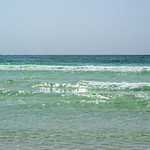INDIAN TEMPLE MOUND MUSEUM
FORT WALTON BEACH, FL

The Indian Temple Mound Museum in Fort Walton Beach, Florida is a museum dedicated to preserving and interpreting the history of the Native American cultures that have made Northwest Florida their home for thousands of years. The museum is located on a shell midden, a mound created by Native American cultures centuries ago, which is now the site of the museum. The museum houses exhibits that showcase the history and culture of Native American cultures in the area, including artifacts and archaeological collections. The museum also houses a research library, which is used by scholars, students and members of the public.
The museum offers educational programs for visitors of all ages, as well as a variety of special events throughout the year. The museum also houses a number of permanent exhibits, including a replica of a Native American village and a Nature Trail. The Nature Trail offers visitors the opportunity to explore the natural beauty of the area and to learn about the ecology of the region. In addition, the museum offers a variety of activities for visitors, including guided tours, hands-on activities, and more.
The Indian Temple Mound Museum is an important source of information about the history, culture and environment of the area, and is a popular destination for visitors of all ages. The museum is open year-round and admission is free.
INDIAN TEMPLE MOUND MUSEUM is a Uncategorized or General Museum in FORT WALTON BEACH FL. US MID #8401200144
The museum is classed as GMU (Uncategorized or General Museums). It comes under American Alliance of Museums (AAM) region: Southeastern (Alabama, Arkansas, Florida, Georgia, Kentucky, Louisiana, Mississippi, North Carolina, South Carolina, Tennessee, Virginia, West Virginia).
Contact INDIAN TEMPLE MOUND MUSEUM
- telephone: 8508339595
- website: http://www.fwb.org/index.php/museums.html
INDIAN TEMPLE MOUND MUSEUM
139 MIRACLE STRIP PKWY SE
FORT WALTON BEACH
FL
32548
Disclaimer: please note this database is maintained by volunteers and whilst we endeavour to do our best, we cannot guarantee the accuracy of the listing.
If you notice any errors or omissions in the listing, please let us know in the comments section below.
Find more FORT WALTON BEACH FL Museums
What 3 Words
///thaw.mocked.booming. Near Fort Walton Beach, Florida
Map of INDIAN TEMPLE MOUND MUSEUM
INDIAN TEMPLE MOUND MUSEUM Information
| MID # | 8401200144 |
| Name | INDIAN TEMPLE MOUND MUSEUM |
| Alternate Name | |
| Classification | Uncategorized or General Museums, , Southeastern |
| Federal Employer Identification Number (EIN) | |
| NTEECC | |
| Tax period of the latest return filed (YYYYMM) | |
| INCOME | 0 |
| REVENUE | 0 |
| LAT/LONG | 30.404179, -86.607222 |
| CODES | FIPS State Code: 12 FIPS County Code: 091 US Census Tract: 022600 US Census Block: 3029 |




